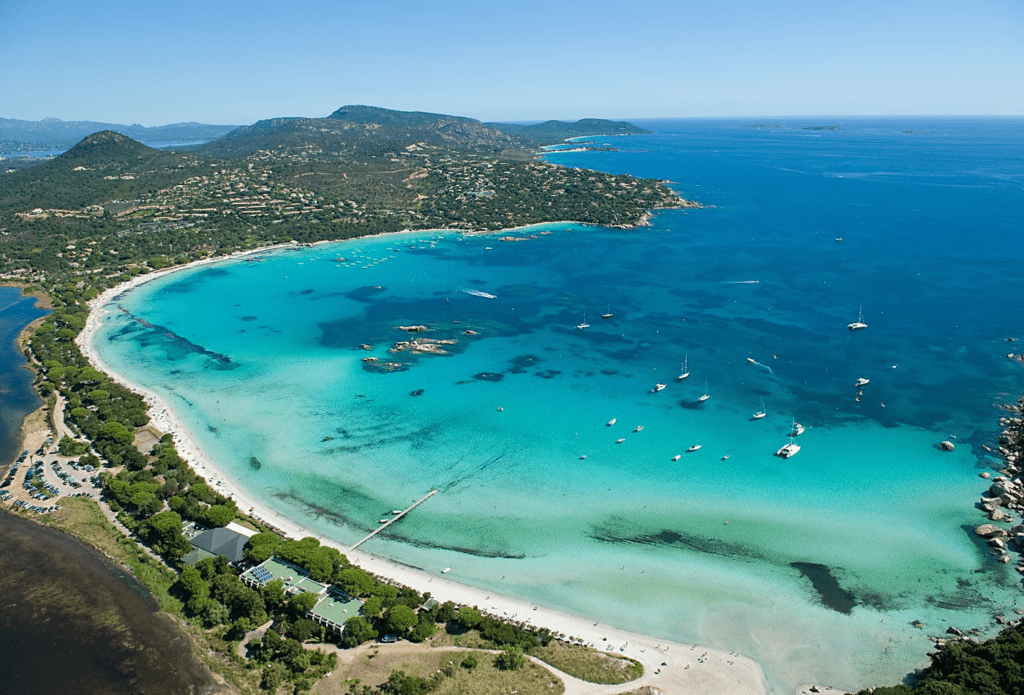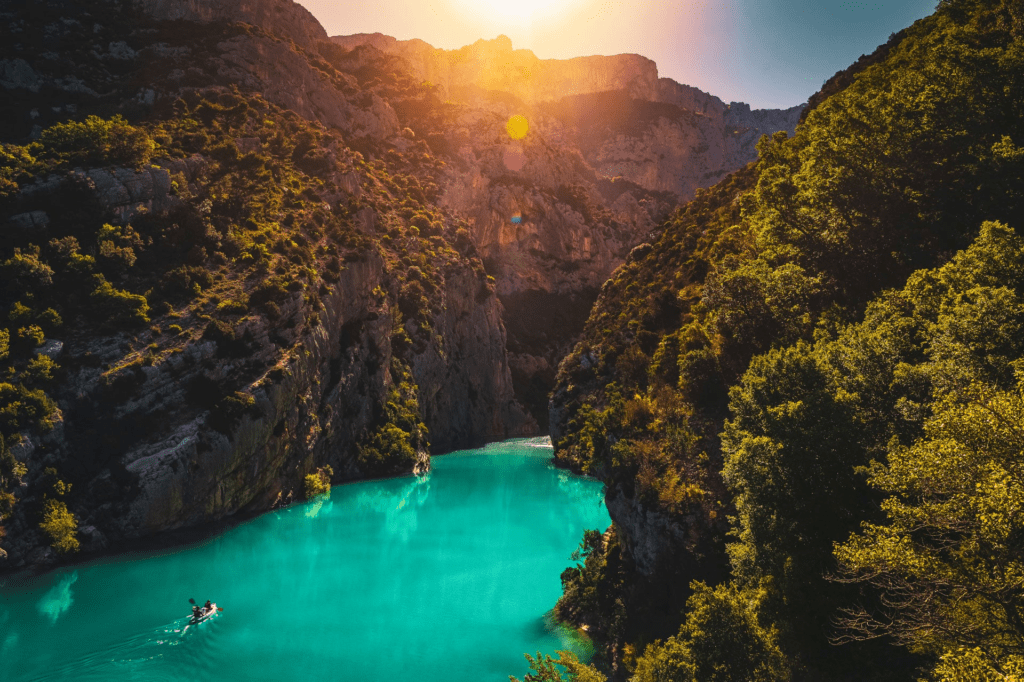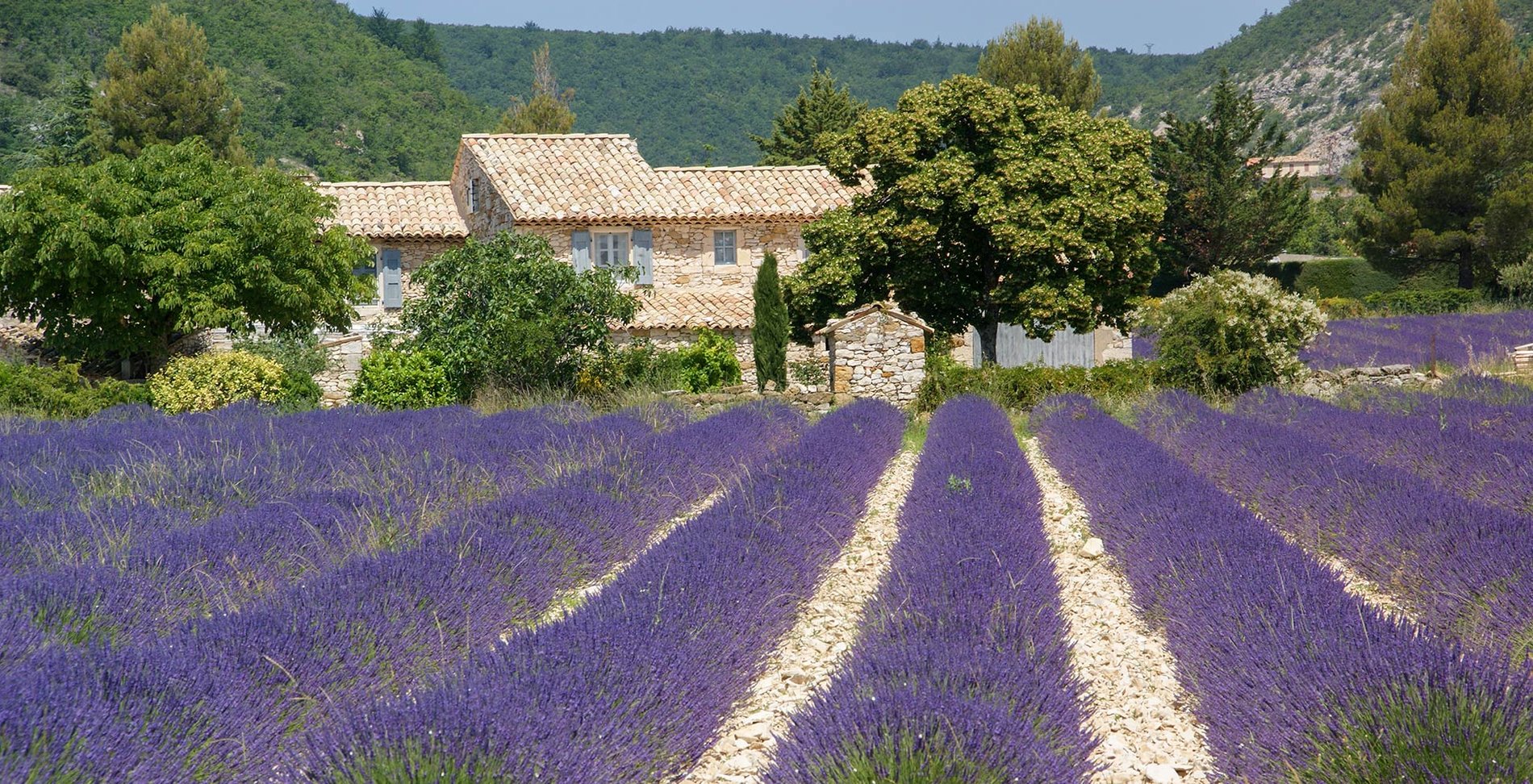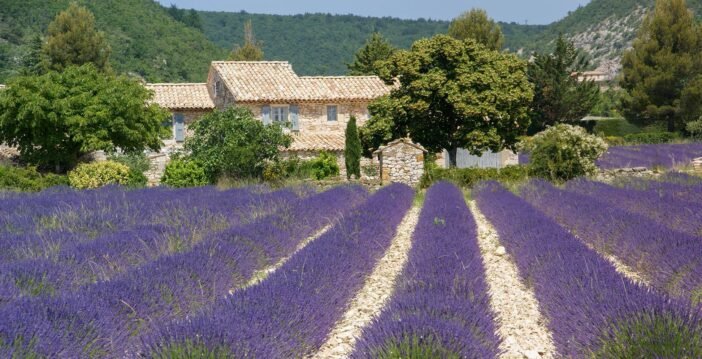France is a country that has long captivated travelers with its rich tapestry of history, culture, and natural beauty. From the snow-dusted peaks of the Alps to the sun-kissed beaches of the Mediterranean, each of France’s 13 metropolitan regions offers a distinct flavor and set of experiences. This ultimate guide will take you on an immersive journey through these diverse regions, unveiling what makes each one unique and why they deserve a spot on your travel itinerary.
1. Auvergne-Rhône-Alpes
Location: Southeastern France, bordering Switzerland and Italy.
Nestled in the heart of southeastern France, Auvergne-Rhône-Alpes is a region where nature’s grandeur meets cultural richness. Dominated by the majestic Alps, including Mont Blanc, the highest peak in Western Europe at 4,808 meters, this region is a haven for outdoor enthusiasts and adventure seekers.
Unique Attractions
- World-Class Ski Resorts: Home to legendary ski destinations like Chamonix, Courchevel, and Val d’Isère, the region offers over 160 ski resorts catering to all skill levels. These resorts boast meticulously groomed pistes, cutting-edge facilities, and breathtaking mountain vistas.
- Lyon: The region’s capital, Lyon, is a UNESCO World Heritage site known for its rich history dating back to Roman times. Wander through the Vieux Lyon (Old Lyon), explore the Basilica of Notre-Dame de Fourvière, and traverse the traboules, hidden passageways that whisper tales of silk merchants and resistance fighters.
- Gastronomy: Lyon is often hailed as the gastronomic capital of France. The city is dotted with bouchons lyonnais, traditional restaurants where you can savor local specialties like quenelles, coq au vin, and salade lyonnaise. Don’t miss the Halles de Lyon Paul Bocuse, a food market named after the legendary chef, where you can indulge in gourmet delights.
- Natural Wonders: Beyond the Alps, the region boasts the Volcanoes of Auvergne, the largest volcanic edifice in Europe. Hike through the Parc Naturel Régional des Volcans d’Auvergne and marvel at the chain of dormant volcanoes, verdant valleys, and crystalline lakes.

Why Visit
Auvergne-Rhône-Alpes offers a harmonious blend of exhilarating outdoor activities and cultural exploration. Whether you’re carving down alpine slopes, savoring Michelin-starred cuisine, or exploring ancient Roman theaters in Vienne, this region promises an unforgettable journey through some of France’s most iconic landscapes.
2. Bourgogne-Franche-Comté
Location: Eastern France, bordering Switzerland.
Bourgogne-Franche-Comté is a region steeped in history and renowned for its contributions to art, culture, and gastronomy. It is the birthplace of Burgundy wines and is characterized by its rolling vineyards, medieval architecture, and serene waterways.
Unique Attractions
- Wine Heritage: The region is synonymous with prestigious wines like Pinot Noir and Chardonnay. Explore the Route des Grands Crus, a wine trail that winds through picturesque villages like Gevrey-Chambertin and Nuits-Saint-Georges, offering tastings and cellar tours.
- Dijon: The historic capital, Dijon, is famed not just for its mustard but also for its well-preserved architectural gems. The Palace of the Dukes of Burgundy now houses the Museum of Fine Arts, one of the oldest museums in France. Stroll along the Owl Trail (La Chouette), following brass plaques embedded in the sidewalks to discover the city’s highlights.
- Besançon: This city is known for its impressive Citadel of Besançon, a UNESCO World Heritage site designed by the military engineer Vauban. The citadel offers panoramic views and houses several museums, including a fascinating Museum of Resistance and Deportation.
- Natural Beauty: The Jura Mountains provide a stunning backdrop for hiking, skiing, and exploring natural wonders like the Hérisson Waterfalls and Baume-les-Messieurs, a quaint village nestled in a cirque.
- Gastronomy: Savor regional delicacies such as Comté cheese, Morbier, and Bresse chicken. The region is also famous for its production of absinthe and kir, a cocktail made with crème de cassis and white wine.
Why Visit
Bourgogne-Franche-Comté invites you to slow down and savor life’s finer pleasures. It’s a place where history is palpable in the cobblestone streets, where each meal is a celebration, and where the landscape invites contemplation and adventure alike.
3. Brittany (Bretagne)
Location: Northwestern France, jutting into the Atlantic Ocean.
Brittany is a land of myths and legends, where ancient Celtic traditions thrive alongside dramatic coastlines and verdant countryside. With its own language and distinct cultural identity, Brittany offers a unique experience within France.
Unique Attractions
- Megalithic Sites: The Carnac Stones are among the world’s most extensive prehistoric sites, featuring over 3,000 standing stones erected between 4500 and 3300 BCE. The purpose of these alignments remains a mystery, adding to their allure.
- Coastal Beauty: The rugged coastline stretches over 2,800 kilometers, featuring natural wonders like the Pink Granite Coast and Pointe du Raz, often compared to Land’s End in Cornwall. The Glénan Archipelago offers crystal-clear waters reminiscent of tropical paradises.
- Saint-Malo: This walled port city is steeped in maritime history. Walk along the ramparts for panoramic views of the sea, explore the Saint-Malo Cathedral, and learn about the city’s corsair (privateer) past.
- Quimper: Renowned for its exquisite faience pottery, Quimper is a charming town with half-timbered houses and the stunning Saint-Corentin Cathedral, one of Brittany’s finest Gothic structures.
- Festivals: Brittany hosts numerous festivals celebrating its Celtic heritage, including the Festival Interceltique de Lorient, which attracts artists and visitors from all Celtic nations for a week of music, dance, and cultural exchange.
- Cuisine: Indulge in galettes de blé noir (buckwheat crepes) filled with savory ingredients, fresh seafood like oysters from Cancale, and wash it down with locally produced cider or chouchenn (Breton mead).

Why Visit
Brittany beckons with its blend of natural splendor, rich history, and vibrant culture. It’s a region where you can explore ancient sites, hike along coastal trails, immerse yourself in local festivals, and taste flavors you won’t find elsewhere.
4. Centre-Val de Loire
Location: Central France, along the Loire River.
Often referred to as the “Garden of France,” Centre-Val de Loire is a region of stunning beauty, fertile lands, and architectural masterpieces. The meandering Loire River and its tributaries are lined with opulent châteaux, manicured gardens, and charming towns.
Unique Attractions
- Châteaux of the Loire Valley: The region is home to over 300 châteaux, each with its own story. Château de Chambord is the largest and one of the most recognizable with its distinctive French Renaissance architecture and intricate roofline. Château de Chenonceau, known as the “Ladies’ Château,” spans the River Cher and boasts exquisite gardens.
- Amboise: This town is notable for the Château d’Amboise, a royal residence where Leonardo da Vinci spent his final years. Visit the nearby Clos Lucé, da Vinci’s last home, which now serves as a museum dedicated to his life and works.
- Tours: As the region’s largest city, Tours offers a blend of medieval and modern attractions. The Cathedral of Saint Gatien features stunning stained glass, while the Place Plumereau is a lively square lined with half-timbered houses and cafes.
- Wine Country: The Loire Valley is France’s third-largest wine region, known for Sauvignon Blanc, Chenin Blanc, and Cabernet Franc. Explore vineyards in Sancerre, Vouvray, and Chinon, and enjoy tastings in centuries-old wine cellars.
- Cycling and Nature: The Loire à Vélo is a 900-kilometer cycling route that offers an eco-friendly way to explore the region’s natural beauty, passing through forests, vineyards, and along riverbanks.
Why Visit
Centre-Val de Loire is a treasure trove for history buffs, wine enthusiasts, and nature lovers. The grandeur of its châteaux, the elegance of its gardens, and the charm of its towns make it a quintessential French experience.
5. Corsica (Corse)
Location: An island in the Mediterranean Sea, southeast of mainland France.
Corsica, known as “L’Île de Beauté” (The Island of Beauty), offers a captivating blend of rugged mountains, pristine beaches, and a culture that’s a unique fusion of French and Italian influences.
Unique Attractions
- Ajaccio: The island’s capital and the birthplace of Napoleon Bonaparte. Visit the Maison Bonaparte, his ancestral home turned museum, and explore the vibrant markets and palm-lined boulevards.
- GR20 Hiking Trail: Considered one of Europe’s toughest long-distance trails, the GR20 spans 180 kilometers across the island’s mountainous spine. The trail offers experienced hikers dramatic landscapes, from granite peaks to glacial lakes.
- Beaches and Coastal Towns: Porto-Vecchio and Calvi boast some of Corsica’s most beautiful beaches with turquoise waters and white sands. The Lavezzi Islands near Bonifacio are a snorkeler’s paradise, with abundant marine life and secluded coves.
- Bonifacio: Perched atop limestone cliffs, this medieval town offers stunning views over the Strait of Bonifacio to Sardinia. Explore its labyrinthine streets, historic citadel, and take a boat tour to the Sea Caves.
- Natural Parks: The Scandola Nature Reserve, a UNESCO World Heritage site, is accessible only by boat and features dramatic red cliffs, sea caves, and rich biodiversity.
- Cultural Festivals: Experience traditional Corsican music during festivals like Festivoce and sample local products at village fairs.

Why Visit
Corsica’s untouched natural beauty and distinct cultural identity make it feel worlds away from the mainland. Whether you’re seeking adventure, relaxation, or cultural enrichment, Corsica offers an island escape like no other.
6. Grand Est
Location: Northeastern France, bordering Germany, Belgium, and Luxembourg.
The Grand Est region is a crossroads of European cultures, where French charm meets Germanic traditions. This diversity is reflected in the region’s architecture, cuisine, and festive celebrations.
Unique Attractions
- Strasbourg: As the seat of the European Parliament, Strasbourg is a symbol of European unity. The city’s Cathédrale Notre-Dame de Strasbourg is a masterpiece of Gothic architecture, boasting an intricate astronomical clock. The Petite France district enchants with its canals and half-timbered houses.
- Colmar: Often called “Little Venice,” Colmar’s cobblestone streets are lined with colorful houses and flower-adorned canals. The Unterlinden Museum houses the famous Isenheim Altarpiece, an important piece of Renaissance art.
- Champagne Region: Visit Reims, where French kings were traditionally crowned at the Reims Cathedral. Tour the chalk cellars of prestigious champagne houses like Taittinger, Pommery, and Veuve Clicquot in Reims and Épernay, and learn about the meticulous process of champagne production.
- Metz: Discover the fusion of history and modernity in Metz, home to the Centre Pompidou-Metz, a contemporary art museum, and the impressive Saint-Stephen Cathedral with its extensive stained-glass windows.
- Alsace Wine Route: Stretching over 170 kilometers, this scenic route passes through idyllic villages like Riquewihr, Eguisheim, and Kaysersberg, offering opportunities to taste exquisite Riesling, Gewürztraminer, and Pinot Gris wines.
- Christmas Markets: Experience the magic of Christmas in cities like Strasbourg and Mulhouse, where centuries-old markets fill the air with the scent of spiced wine, gingerbread, and festive cheer.
Why Visit
Grand Est provides a rich cultural experience marked by historical significance, architectural beauty, and world-renowned gastronomy. Its strategic location makes it a gateway to exploring the heart of Europe.
7. Hauts-de-France
Location: Northernmost region of France, bordering Belgium and the English Channel.
Hauts-de-France is a region with a resilient spirit, having been a strategic location in both World Wars. Today, it offers a blend of historical sites, vibrant cities, and charming countryside.
Unique Attractions
- World War History: Visit the Somme Battlefields and the Thiepval Memorial dedicated to the missing of the Somme. The Vimy Ridge Memorial commemorates the Canadian forces who fought in WWI. These sites offer poignant insights into the past with museums and guided tours.
- Lille: The region’s capital is a dynamic city known for its beautiful Flemish architecture, bustling markets, and cultural institutions. The Palais des Beaux-Arts houses an impressive collection of European art, second only to the Louvre.
- Amiens: Famous for the Amiens Cathedral, the largest Gothic cathedral in France, and the hortillonnages, floating gardens accessible by boat along the Somme River.
- Arras: Explore the Grand Place and Place des Héros, two remarkable squares surrounded by Baroque townhouses. The Wellington Quarry offers underground tours of WWI tunnels used by Allied forces.
- Coastal Towns: Le Touquet and Berck-sur-Mer offer sandy beaches and seaside leisure. The Opal Coast features dramatic cliffs at Cap Blanc-Nez and Cap Gris-Nez, with views across the English Channel.
- Festivals and Events: The Braderie de Lille is a massive annual flea market where the entire city turns into an open-air bazaar, and the tradition of eating moules-frites (mussels and fries) is celebrated.
Why Visit
Hauts-de-France is a region of contrasts, offering solemn historical reflection alongside vibrant urban life and natural beauty. It’s a destination that honors its past while embracing the future.
8. Île-de-France
Location: North-central France, encompassing Paris and its surrounding areas.
Île-de-France is the pulsating heart of the nation, where history, art, fashion, and gastronomy converge. Beyond the iconic allure of Paris, the region offers a wealth of attractions waiting to be explored.
Unique Attractions
- Paris: The City of Light needs little introduction. From the Eiffel Tower and Louvre Museum to the Montmartre district and Sacre-Cœur Basilica, Paris is a mosaic of world-famous landmarks. Stroll along the Seine River, relax in the Luxembourg Gardens, and enjoy a show at the Moulin Rouge.
- Versailles: The Palace of Versailles epitomizes royal opulence with its gilded Hall of Mirrors, extensive gardens, and the Grand Trianon. The palace’s history is as rich as its decor, having been the seat of power for Louis XIV.
- Fontainebleau: Another royal residence, the Château de Fontainebleau offers a glimpse into 700 years of monarchal history. The surrounding forest is a popular destination for hiking, rock climbing, and nature walks.
- Disneyland Paris: Located in Marne-la-Vallée, it’s Europe’s most visited theme park, offering magical experiences for families and Disney enthusiasts.
- Giverny: Visit the home and gardens of Claude Monet, where you can see the inspiration behind his famous water lily series.
- Cultural Experiences: Explore world-class museums like the Musée d’Orsay and the Centre Pompidou, attend performances at the Opéra Garnier, and shop in the Marais district.

Why Visit
Île-de-France is an essential destination for anyone seeking to experience the essence of France. It’s a region where every street corner holds a piece of history, art is woven into the fabric of daily life, and the possibilities for exploration are endless.
9. Normandy (Normandie)
Location: Northern France, along the English Channel.
Normandy is a region where lush pastoral landscapes meet dramatic coastal cliffs, and where history has been both made and commemorated. It offers a serene countryside interspersed with significant historical sites.
Unique Attractions
- D-Day Beaches: The beaches of Omaha, Utah, Gold, Juno, and Sword are etched into history as the landing sites for the Allied invasion on June 6, 1944. Visit the D-Day Museum in Arromanches, the American Cemetery in Colleville-sur-Mer, and the Memorial de Caen for a profound understanding of WWII events.
- Mont Saint-Michel: This iconic island commune is crowned by a medieval abbey and becomes surrounded by water during high tide, creating a stunning visual spectacle. Wander through its narrow streets lined with shops and eateries.
- Honfleur: A picturesque harbor town that inspired artists like Claude Monet and Eugène Boudin. The Vieux Bassin (Old Harbor) is lined with slate-fronted houses, and the Sainte-Catherine Church, built entirely of wood, is a must-see.
- Rouen: Known as the “City of a Hundred Spires,” Rouen boasts the Rouen Cathedral, immortalized in Monet’s paintings. The city is rich in medieval architecture and is the site where Joan of Arc was tried and executed.
- Giverny: Although part of Île-de-France administratively, it’s often associated with Normandy due to its location and ties to Monet, who lived and painted here.
- Culinary Delights: Normandy is famous for its Camembert, Pont-l’Évêque, and Livarot cheeses, as well as apple cider, Calvados (apple brandy), and dishes like moules à la normande (mussels in cream sauce).
Why Visit
Normandy offers a journey through pivotal moments in history set against a backdrop of natural beauty. It’s a place to reflect, explore, and indulge in the simple pleasures of life in the French countryside.
10. Nouvelle-Aquitaine
Location: Southwestern France, stretching from the Atlantic coast to the Pyrenees.
Nouvelle-Aquitaine is France’s largest region, offering a diverse landscape that includes rolling vineyards, surf-worthy beaches, and towering mountains. It’s a land where history, culture, and nature converge harmoniously.
Unique Attractions
- Bordeaux: This UNESCO World Heritage city is a hub for wine enthusiasts. Explore the Cité du Vin, an immersive museum dedicated to wine cultures, and stroll along the Garonne River. The Place de la Bourse and its Miroir d’Eau (Water Mirror) provide perfect photo opportunities.
- Wine Country: Beyond the city, the Bordeaux wine region encompasses famous appellations like Saint-Émilion, Medoc, and Pomerol. Visit châteaux for tastings and tours to learn about the art of winemaking.
- Dordogne Valley: Discover prehistoric cave paintings at Lascaux Cave, dubbed the “Sistine Chapel of Prehistory.” Explore medieval villages like Beynac-et-Cazenac and La Roque-Gageac, perched along the Dordogne River.
- Biarritz: A glamorous seaside town known for its surf culture, upscale boutiques, and the Rocher de la Vierge rock formation. The nearby town of Saint-Jean-de-Luz offers Basque charm and beautiful beaches.
- The Dune of Pilat: Standing over 100 meters high, it’s the tallest sand dune in Europe. Climb to the top for panoramic views of the Arcachon Bay and the Atlantic Ocean.
- Basque Country: Explore the unique culture, language, and traditions of the French Basque region. Visit Bayonne for its historic old town and renowned Bayonne ham.
- Cuisine: Nouvelle-Aquitaine is a food lover’s paradise. Enjoy foie gras, truffles, oysters from Marennes-Oléron, and regional dishes like cassoulet.

Why Visit
Nouvelle-Aquitaine offers a rich tapestry of experiences, from indulging in some of the world’s finest wines to exploring ancient human history. Its varied landscapes provide the perfect setting for both relaxation and adventure.
11. Occitanie
Location: Southern France, stretching from the Mediterranean Sea to the Pyrenees Mountains.
Occitanie is a region steeped in history, with landscapes that range from sun-drenched beaches to snow-capped peaks. It is a land where the Occitan language and traditions continue to thrive.
Unique Attractions
- Toulouse: Known as La Ville Rose (The Pink City) due to its terracotta brick buildings, Toulouse is a vibrant hub for aerospace technology, hosting the Cité de l’Espace and the Airbus headquarters. Explore the Basilique Saint-Sernin, the largest Romanesque church in Europe.
- Carcassonne: This fortified medieval city is straight out of a fairy tale. The Cité de Carcassonne is a UNESCO World Heritage site with 52 towers and double-walled fortifications. Wander through its cobbled streets and visit the Château Comtal.
- Pont du Gard: An ancient Roman aqueduct bridge that stands as a testament to engineering prowess. It’s part of a larger UNESCO World Heritage site and offers nearby swimming and kayaking opportunities.
- Lourdes: A major pilgrimage site where Saint Bernadette reported visions of the Virgin Mary. The Sanctuary of Our Lady of Lourdes attracts millions seeking spiritual solace and healing.
- The Pyrenees: The mountain range offers skiing resorts like Saint-Lary-Soulan, hiking trails in the Cirque de Gavarnie, and the unique Pic du Midi observatory accessible by cable car.
- Mediterranean Coast: Enjoy the beaches of Narbonne Plage, Collioure, and Gruissan, each offering a mix of relaxation and water sports.
- Canal du Midi: This 17th-century canal connects the Mediterranean to the Atlantic Ocean. Rent a boat or cycle along its shaded towpaths lined with plane trees.
- Culinary Highlights: Savor regional dishes like cassoulet from Castelnaudary, aligot (a cheesy potato purée), and wines from Gaillac and Cahors.
Why Visit
Occitanie is a mosaic of cultural and natural wonders. Whether you’re exploring medieval castles, embarking on spiritual journeys, or enjoying the sun and sea, the region offers a deeply enriching experience.
12. Pays de la Loire
Location: Western France, along the lower Loire River.
Pays de la Loire is a region that combines historical intrigue with modern attractions. Its diverse offerings range from majestic castles to cutting-edge entertainment.
Unique Attractions
- Nantes: Once a major port and the birthplace of Jules Verne, Nantes is a city of innovation and art. Visit the Château des Ducs de Bretagne, explore the Machines of the Isle of Nantes, where you can ride a mechanical elephant, and wander through the Jardin des Plantes.
- Le Mans: Famous for the 24 Hours of Le Mans endurance race, the city also boasts a beautifully preserved medieval old town, Cité Plantagenêt, with cobbled streets and timber-framed houses.
- Angers: Home to the imposing Château d’Angers, which houses the Apocalypse Tapestry, a medieval masterpiece. The city is known for its vibrant cultural scene and beautiful gardens.
- Saumur: Explore the Château de Saumur overlooking the Loire River and visit the Cadre Noir, France’s prestigious national riding school.
- Puy du Fou: An award-winning historical theme park offering spectacular shows that bring history to life with impressive reenactments, special effects, and performances.
- Atlantic Coast: Relax on the beaches of La Baule, known for its long stretch of sandy shore, or explore the rugged beauty of the Vendée coast.
- Loire Valley Vineyards: The region produces notable wines, including Muscadet, Anjou Rosé, and Saumur sparkling wines. Visit vineyards for tastings and tours.
Why Visit
Pays de la Loire offers a blend of historical richness and contemporary attractions. It’s an ideal destination for families, history enthusiasts, and those looking to experience the charm of French provincial life.
13. Provence-Alpes-Côte d’Azur
Location: Southeastern France, bordering Italy and the Mediterranean Sea.
Provence-Alpes-Côte d’Azur (PACA) is synonymous with sun-drenched landscapes, lavender fields, and the allure of the French Riviera. It’s a region that has inspired artists, attracted the elite, and captivated visitors for centuries.
Unique Attractions
- French Riviera (Côte d’Azur): Glamorous coastal cities like Nice, with its famous Promenade des Anglais, Cannes, known for the Cannes Film Festival, and Saint-Tropez, a playground for celebrities, offer luxurious experiences, beautiful beaches, and vibrant nightlife.
- Marseille: France’s oldest city and a melting pot of cultures. Visit the Old Port (Vieux-Port), explore the Le Panier neighborhood, and ascend to Notre-Dame de la Garde for panoramic views.
- Avignon: Known for the Palais des Papes, a UNESCO World Heritage site and one of the largest medieval Gothic buildings in Europe. The city is also famous for the Pont d’Avignon and its annual Festival d’Avignon, one of the world’s greatest performing arts festivals.
- Arles: Follow in the footsteps of Vincent van Gogh, who produced many works inspired by this town. Explore Roman monuments like the Arles Amphitheatre and The Roman Theatre.
- Lavender Fields: From mid-June to early August, the Plateau de Valensole and Luberon regions bloom with fragrant lavender fields, creating postcard-perfect landscapes.
- Verdon Gorge: Europe’s deepest canyon offers spectacular scenery and opportunities for hiking, kayaking, and rock climbing. The Lac de Sainte-Croix at its base is ideal for water activities.
- Provençal Villages: Explore charming hilltop villages like Gordes, Roussillon with its ochre cliffs, and Les Baux-de-Provence, featuring a castle and sweeping views.
- Cuisine and Wine: Indulge in bouillabaisse (a traditional fish stew), ratatouille, and aioli. The region’s wines, such as those from Châteauneuf-du-Pape, are world-renowned.

Why Visit
Provence-Alpes-Côte d’Azur is a feast for the senses. Its combination of natural beauty, cultural richness, and a laid-back Mediterranean lifestyle make it a destination that embodies the joie de vivre.
The French Regions
France’s regions offer a kaleidoscope of experiences that cater to every type of traveler. Each region is a chapter in France’s grand narrative, telling stories through its landscapes, architecture, cuisine, and traditions.
From the snow-capped peaks of Auvergne-Rhône-Alpes to the sun-drenched beaches of Provence-Alpes-Côte d’Azur, and from the historical battlefields of Normandy to the cosmopolitan allure of Île-de-France, France invites you to explore its depths and nuances.
Embarking on this journey through France’s enchanting regions not only enriches your understanding of the country’s diversity but also leaves you with memories that will last a lifetime. So, pack your bags, embrace the adventure, and discover the unmissable destinations and unique experiences that await you in this extraordinary land.
Your extraordinary French odyssey awaits!

